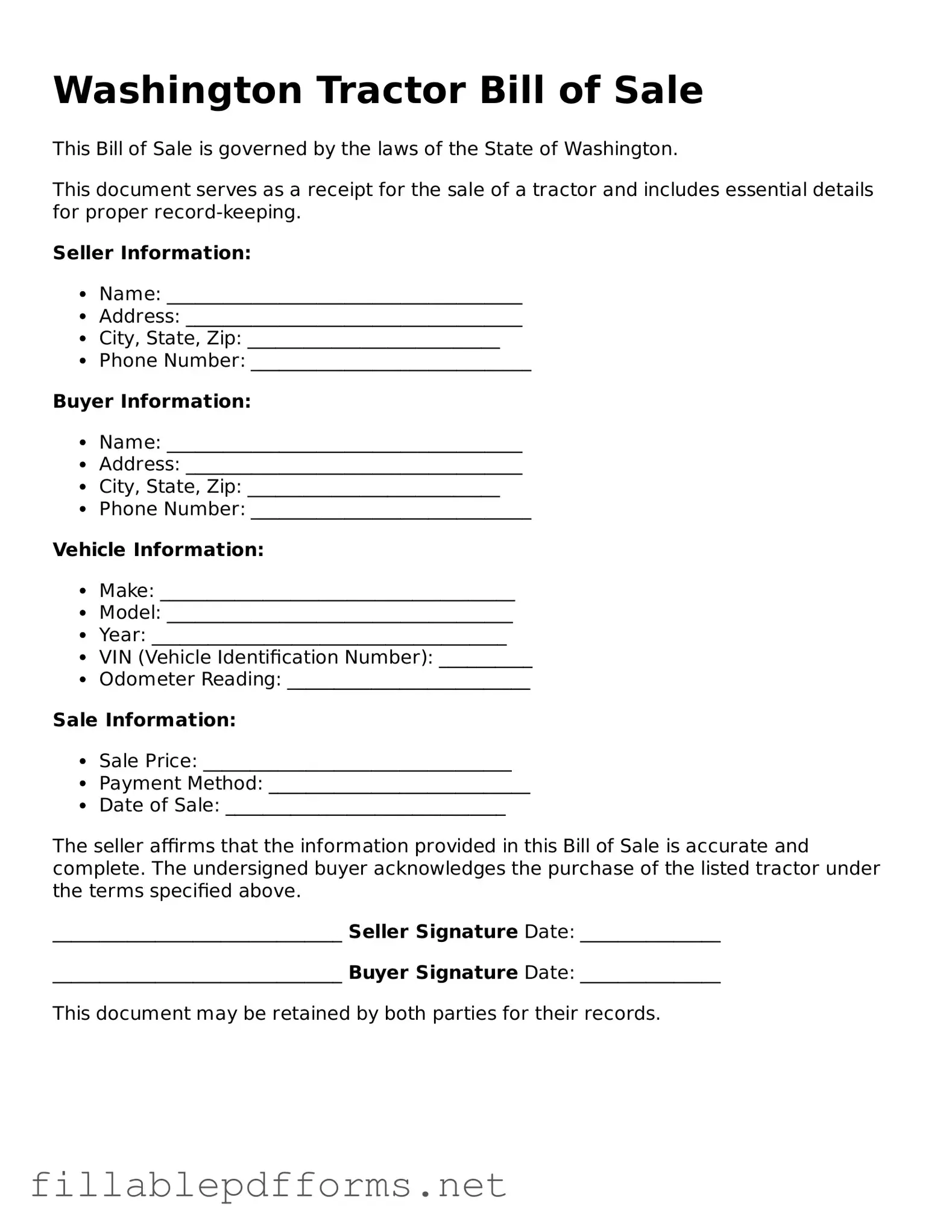When it comes to purchasing or selling a tractor in Washington State, the Bill of Sale form serves as a crucial document that formalizes the transaction between the buyer and the seller. This form not only provides essential information about the tractor, such as its make, model, year, and identification number, but it also outlines the terms of the sale, including the purchase price and any warranties or conditions associated with the transaction. Additionally, the Bill of Sale acts as a receipt for the buyer, confirming their ownership of the tractor, while simultaneously protecting the seller by documenting the transfer of responsibility. In Washington, this form is particularly important for ensuring compliance with state regulations and for facilitating the registration process with the Department of Licensing. Understanding the components of this form, including the signatures required from both parties and any necessary disclosures, can help ensure a smooth transaction and provide peace of mind for everyone involved.
